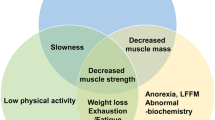Abstract
Serum concentrations of interleukin (IL) 1 beta, IL-1 receptor antagonist (IL-1ra), IL-6, tumor necrosis factor (TNF) alpha, and C-reactive protein (CRP) were determined in ten healthy men at sea level and during four days of altitude hypoxia (4350m above sea level). The mean (SD) arterial blood oxygen saturations were 78.6 (7.3)%, 82.4 (4.9)%, and 83.4 (5.3)% in the first, second, and third days at altitude, respectively. A symptom score of acute mountain sickness (AMS) revealed that the subjects had mostly light symptoms of AMS. Mean serum IL-6 increased from 1.36 (1.04) pg × ml–1 at sea level to 3.10 (1.65), 4.71 (2.81), and 3,54 (2.17) pg × ml–1 during the first three days at altitude, and to 9.96 (8.90) pg × ml–1 on the fourth day at altitude (ANOVA p =0.002). No changes occurred in serum concentrations of IL-1 beta, IL-1ra, TNF alpha, or CRP. The serum IL-6 were related to SaO2, ( r =–0.45, p =0.003), but not to heart rates or AMS scores. In conclusion, human serum concentrations of IL-6 increased during altitude hypoxia whereas the other proinflammatory cytokines remained unchanged. The major role of IL-6 during altitude hypoxia seem not to be mediation of inflammation, instead, the role of IL-6 could be to stimulate the erythropoiesis at altitude.
Similar content being viewed by others
Author information
Authors and Affiliations
Additional information
Accepted: 30 May 1997
Rights and permissions
About this article
Cite this article
Klausen, T., Olsen, N., Poulsen, T. et al. Hypoxemia increases serum interleukin-6 in humans. Eur J Appl Physiol 76, 480–482 (1997). https://doi.org/10.1007/s004210050278
Issue Date:
DOI: https://doi.org/10.1007/s004210050278




